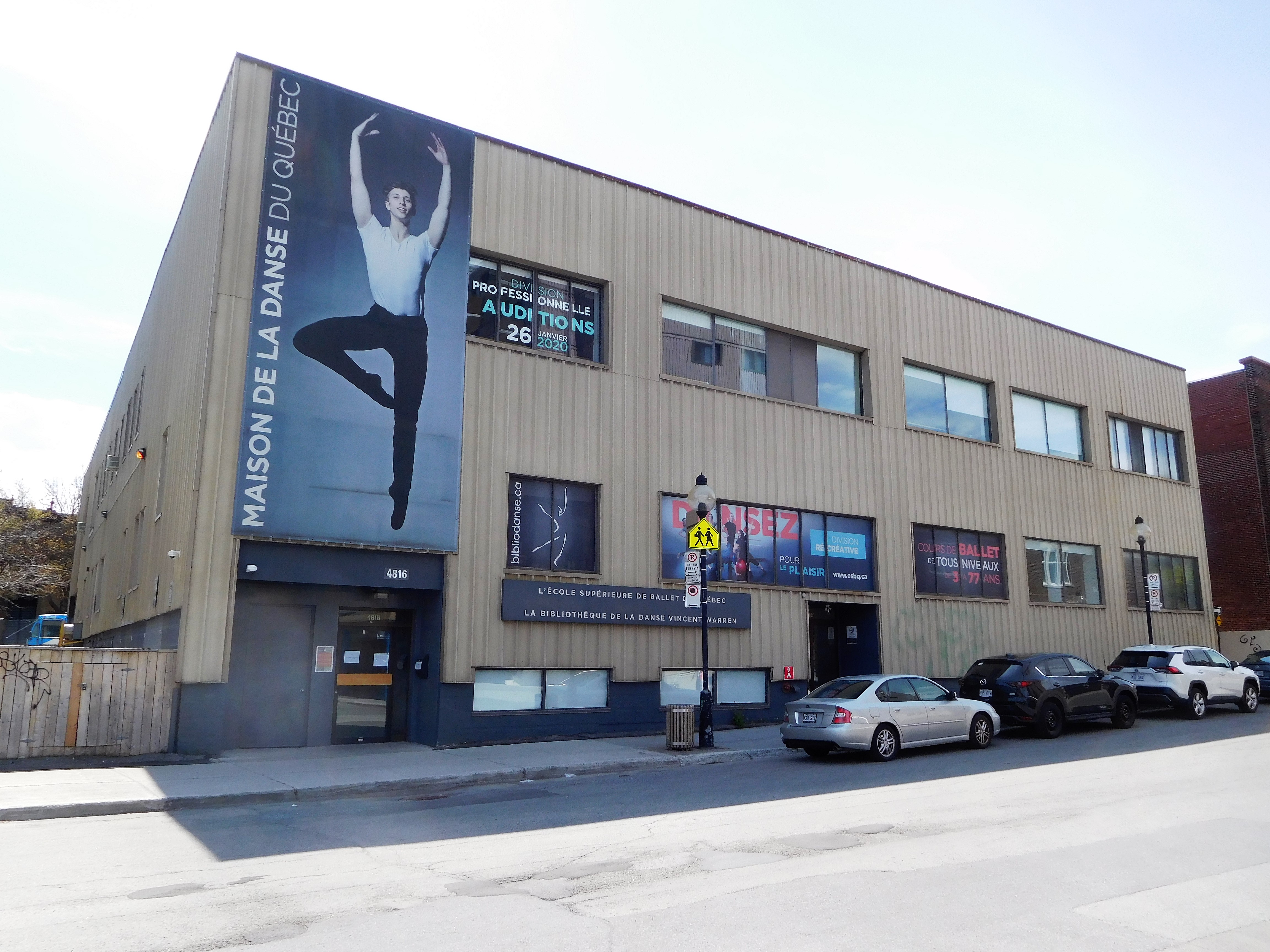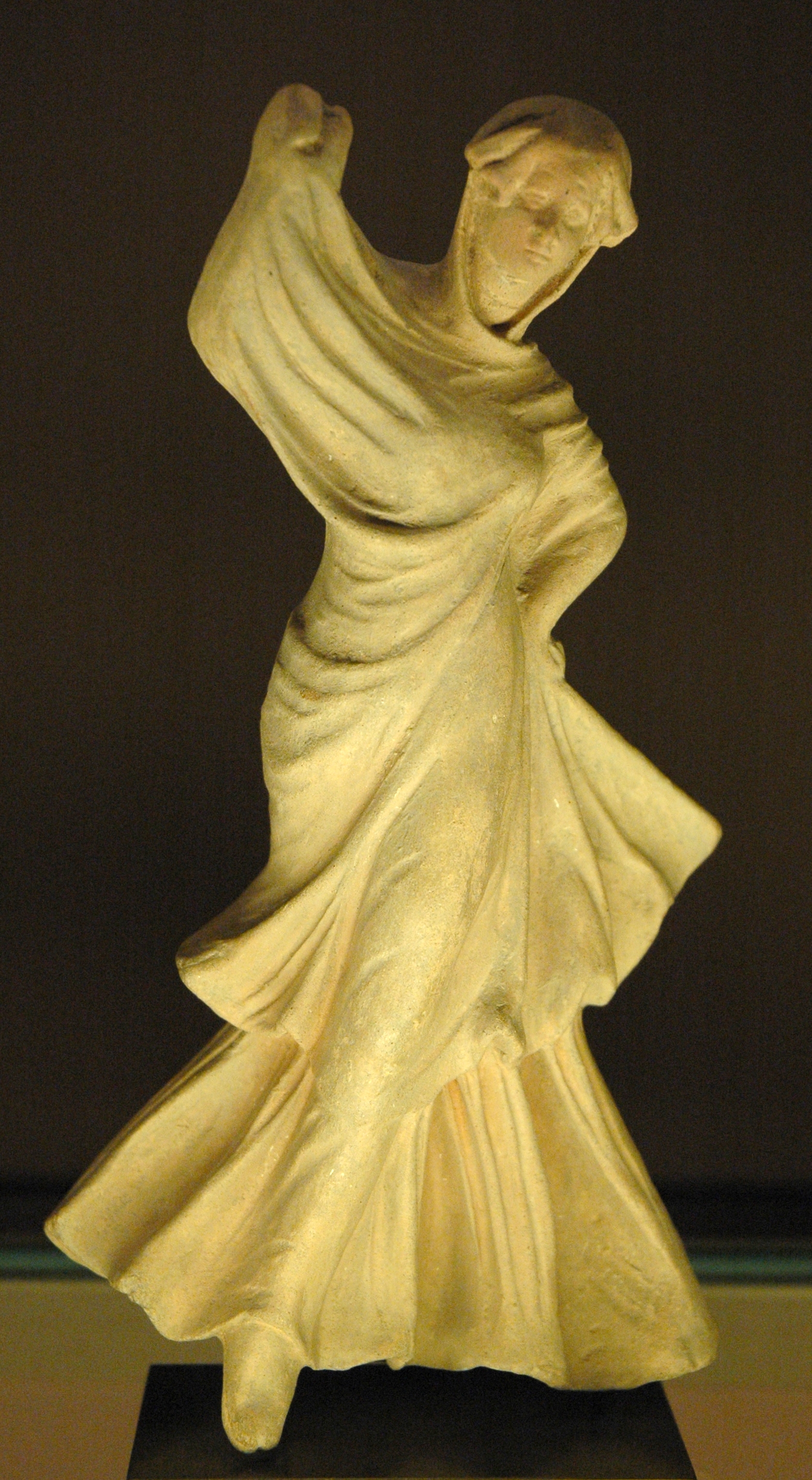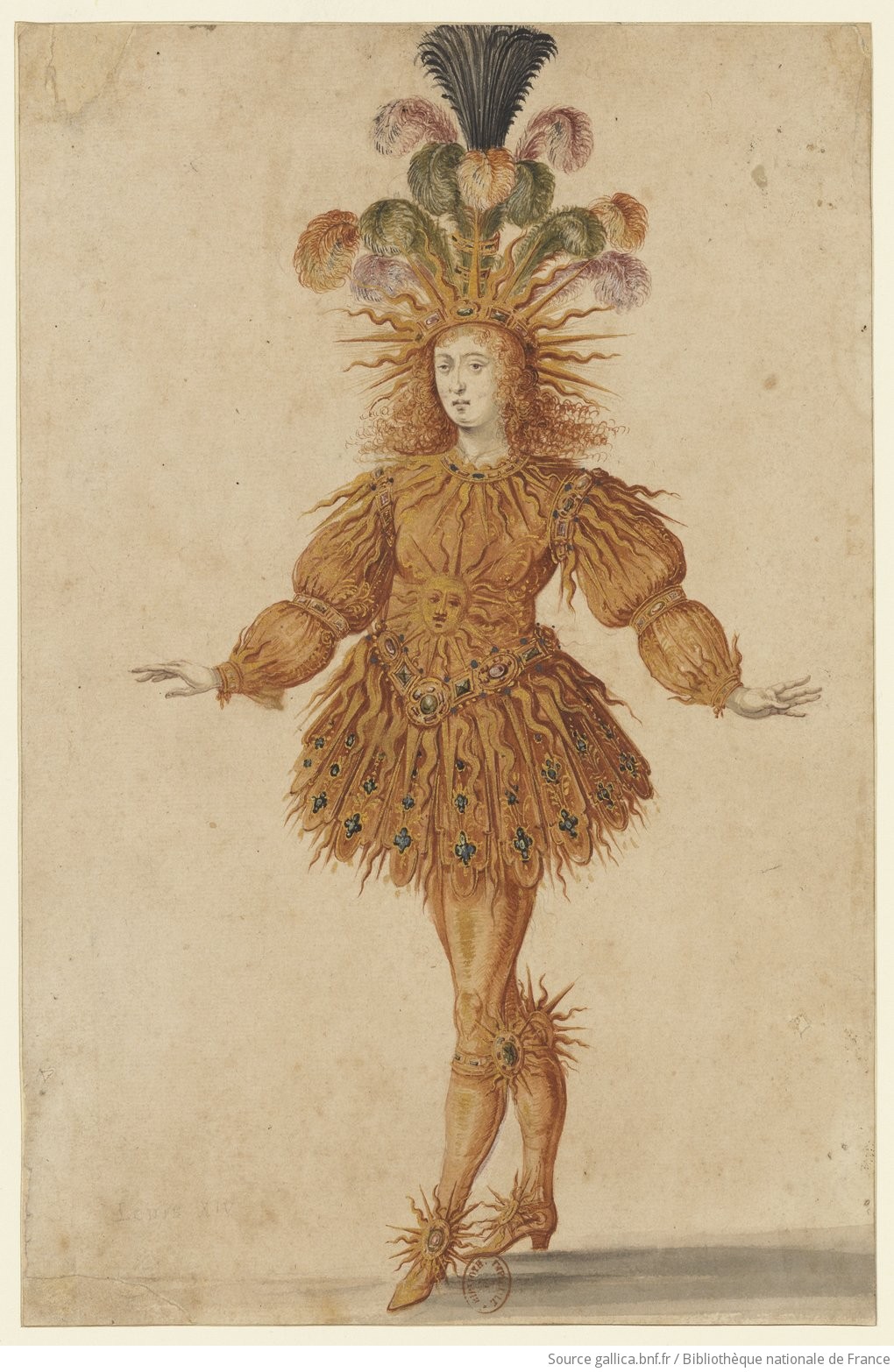|
École Supérieure De Ballet Du Québec
The École supérieure de ballet de Montréal (ESBQ) is a professional dance training school in Montreal, Quebec, Canada which is part of the Maison de la danse Ludmilla Chiriaeff, a building that it has owned since 1982 and which is also home to the dance company Les Grands Ballets Canadiens de Montréal. The school is located in central Montreal in the Plateau-Mont-Royal borough, a few yards from the Laurier subway station. It is the only institution in Quebec to offer a complete professional training program in contemporary dance. Montreal is home to more than 30 professional dance companies, with more than 200 dance performances presented every year in some 20 different theatres and performance spaces. History Since 2010, the ESBCM is directed by Anik Bissonnette, whose professional credits include being principal dancer with Les Grands Ballets Canadiens many years. In 2011, the school was renamed L'École supérieure de ballet du Québec to reflect its role in dance develop ... [...More Info...] [...Related Items...] OR: [Wikipedia] [Google] [Baidu] |
Department Of Canadian Heritage
The Department of Canadian Heritage, or simply Canadian Heritage (french: Patrimoine canadien), is the department of the Government of Canada that has roles and responsibilities related to initiatives that promote and support "Canadian identity and values, cultural development, and heritage." The department is administered by the Deputy Minister, currently Hélène Laurendeau, who is appointed by the Governor in Council, and it reports directly to the Minister of Canadian Heritage, who is currently Pablo Rodríguez. Under its current mandate, the jurisdiction of Canadian Heritage encompasses, but is not limited to, jurisdiction over: the promotion of human rights, fundamental freedoms and related values; multiculturalism; the arts; cultural heritage and industries, including performing arts, visual and audio-visual arts, publishing, sound recording, film, video, and literature; national battlefields; the encouragement, promotion, and development of sport; the advancement o ... [...More Info...] [...Related Items...] OR: [Wikipedia] [Google] [Baidu] |
Education In Montreal
With access to six universities and twelve junior colleges in an 8 kilometre (5 mi) radius, Montreal, Quebec (Canada) has the highest proportion of post-secondary students of all major cities in North America. This represents roughly 248,000 post-secondary students, one of the largest numbers in the world. Urban francophone universities *Université du Québec: (About 66,000 students) ** Université du Québec à Montréal (UQAM) ** École de technologie supérieure (ETS) ** École nationale d'administration publique (ENAP) ** Institut National de la Recherche Scientifique (INRS) *Université de Montréal: (About 55,000 students) **École Polytechnique de Montréal **HEC Montréal - École des Hautes Études Commerciales de Montréal Urban anglophone universities *Concordia University: (About 44,000 students) **Loyola Campus (Notre-Dame-de-Grâce) **Sir George Williams Campus (Downtown Montreal) *McGill University: (About 32,000 students) **Downtown Campus (Downtown Montrea ... [...More Info...] [...Related Items...] OR: [Wikipedia] [Google] [Baidu] |
Ballet Schools In Canada
Ballet () is a type of performance dance that originated during the Italian Renaissance in the fifteenth century and later developed into a concert dance form in France and Russia. It has since become a widespread and highly technical form of dance with its own vocabulary. Ballet has been influential globally and has defined the foundational techniques which are used in many other dance genres and cultures. Various schools around the world have incorporated their own cultures. As a result, ballet has evolved in distinct ways. A ''ballet'' as a unified work comprises the choreography and music for a ballet production. Ballets are choreographed and performed by trained ballet dancers. Traditional classical ballets are usually performed with classical music accompaniment and use elaborate costumes and staging, whereas modern ballets are often performed in simple costumes and without elaborate sets or scenery. Etymology Ballet is a French word which had its origin in Italian '' ... [...More Info...] [...Related Items...] OR: [Wikipedia] [Google] [Baidu] |
Dance History
The history of dance is difficult to access because dance does not often leave behind clearly identifiable physical artifacts that last over millennia, such as stone tools, hunting implements or cave paintings. It is not possible to identify with exact precision when dance became part of human culture. Early dance The natural impulse to dance may have existed in early primates before they evolved into humans. Dance has been an important part of ceremony, rituals, celebrations and entertainment since before the birth of the earliest human civilizations. Archaeology delivers traces of dance from prehistoric times such as the 10,000-year-old Bhimbetka rock shelters paintings in India and Egyptian tomb paintings depicting dancing figures from c. 3300 BC. Many contemporary dance forms can be traced back to historical, traditional, ceremonial and ethnic dances of the ancient period. Means of social communication and bonding Dance may have been used as a tool of social interaction tha ... [...More Info...] [...Related Items...] OR: [Wikipedia] [Google] [Baidu] |
Choreography
Choreography is the art or practice of designing sequences of movements of physical bodies (or their depictions) in which Motion (physics), motion or Visual appearance, form or both are specified. ''Choreography'' may also refer to the design itself. A choreographer is one who creates choreographies by practising the art of choreography, a process known as choreographing. It most commonly refers to dance choreography. In dance, ''choreography'' may also refer to the design itself, which is sometimes expressed by means of dance notation. Dance choreography is sometimes called ''dance composition''. Aspects of dance choreography include the compositional use of organic unity, rhythmic or non-rhythmic articulation, theme and variation, and repetition. The choreographic process may employ improvisation for the purpose of developing innovative movement ideas. In general, choreography is used to design dances that are intended to be performed as concert dance. The art of choreograph ... [...More Info...] [...Related Items...] OR: [Wikipedia] [Google] [Baidu] |
Pointe Technique
Pointe technique ( ) is the part of classical ballet technique that concerns ''pointe work'', in which a ballet dancer supports all body weight on the tips of fully extended feet within pointe shoes. A dancer is said to be ''en pointe'' () when the dancer's body is supported in this manner, and a fully extended vertical foot is said to be ''en pointe'' when touching the floor, even when not bearing weight. Pointe technique resulted from a desire for female dancers to appear weightless and sylph-like. Although both men and women are capable of pointe work, it is most often performed by women. Extensive training and practice are required to develop the strength and technique needed for pointe work. Typically, dance teachers consider factors such as age, experience, strength and alignment when deciding whether to allow a dancer to begin pointe work. Technique Pointe technique encompasses both the mechanical and artistic aspects of pointe work. In particular, it is concerned with ... [...More Info...] [...Related Items...] OR: [Wikipedia] [Google] [Baidu] |
Ballet
Ballet () is a type of performance dance that originated during the Italian Renaissance in the fifteenth century and later developed into a concert dance form in France and Russia. It has since become a widespread and highly technical form of dance with its own vocabulary. Ballet has been influential globally and has defined the foundational techniques which are used in many other dance genres and cultures. Various schools around the world have incorporated their own cultures. As a result, ballet has evolved in distinct ways. A ''ballet'' as a unified work comprises the choreography and music for a ballet production. Ballets are choreographed and performed by trained ballet dancers. Traditional classical ballets are usually performed with classical music accompaniment and use elaborate costumes and staging, whereas modern ballets are often performed in simple costumes and without elaborate sets or scenery. Etymology Ballet is a French word which had its origin in Italian ... [...More Info...] [...Related Items...] OR: [Wikipedia] [Google] [Baidu] |
Contemporary Dance
Contemporary dance is a genre of dance performance that developed during the mid-twentieth century and has since grown to become one of the dominant genres for formally trained dancers throughout the world, with particularly strong popularity in the U.S. and Europe. Although originally informed by and borrowing from classical, modern, and jazz styles, it has come to incorporate elements from many styles of dance. Due to its technical similarities, it is often perceived to be closely related to modern dance, ballet, and other classical concert dance styles. In terms of the focus of its technique, contemporary dance tends to combine the strong but controlled legwork of ballet with modern that stresses on torso. It also employs contract-release, floor work, fall and recovery, and improvisation characteristics of modern dance. Unpredictable changes in rhythm, speed, and direction are often used, as well. Additionally, contemporary dance sometimes incorporates elements of non-western ... [...More Info...] [...Related Items...] OR: [Wikipedia] [Google] [Baidu] |
Montreal
Montreal ( ; officially Montréal, ) is the List of the largest municipalities in Canada by population, second-most populous city in Canada and List of towns in Quebec, most populous city in the Provinces and territories of Canada, Canadian province of Quebec. Founded in 1642 as ''Fort Ville-Marie, Ville-Marie'', or "City of Mary", it is named after Mount Royal, the triple-peaked hill around which the early city of Ville-Marie is built. The city is centred on the Island of Montreal, which obtained its name from the same origin as the city, and a few much smaller peripheral islands, the largest of which is Île Bizard. The city is east of the national capital Ottawa, and southwest of the provincial capital, Quebec City. As of 2021, the city had a population of 1,762,949, and a Census Metropolitan Area#Census metropolitan areas, metropolitan population of 4,291,732, making it the List of the largest municipalities in Canada by population, second-largest city, and List of cen ... [...More Info...] [...Related Items...] OR: [Wikipedia] [Google] [Baidu] |
Laurier (Montreal Metro)
Laurier station is a Montreal Metro The Montreal Metro (french: Métro de Montréal) is a rubber-tired underground rapid transit system serving Greater Montreal, Quebec, Canada. The metro, operated by the Société de transport de Montréal (STM), was inaugurated on October 14, ... station in the borough of Le Plateau-Mont-Royal in Montreal, Quebec, Canada. It is operated by the Société de transport de Montréal (STM) and serves the Orange Line (Montreal Metro), Orange Line. It is located just to the east of the Mile End, Montreal, Mile End neighbourhood. The station opened on October 14, 1966, as part of the original network of the Metro. Overview The station, designed by Jean P. Pothier, is a normal side platform station, built in tunnel. It has a Mezzanine (architecture), mezzanine and an entrance at either end, the southern one incorporating an open sided bus shelter, and the northern one including an automatic ticket barrier. The walls are decorated in grey granit ... [...More Info...] [...Related Items...] OR: [Wikipedia] [Google] [Baidu] |








